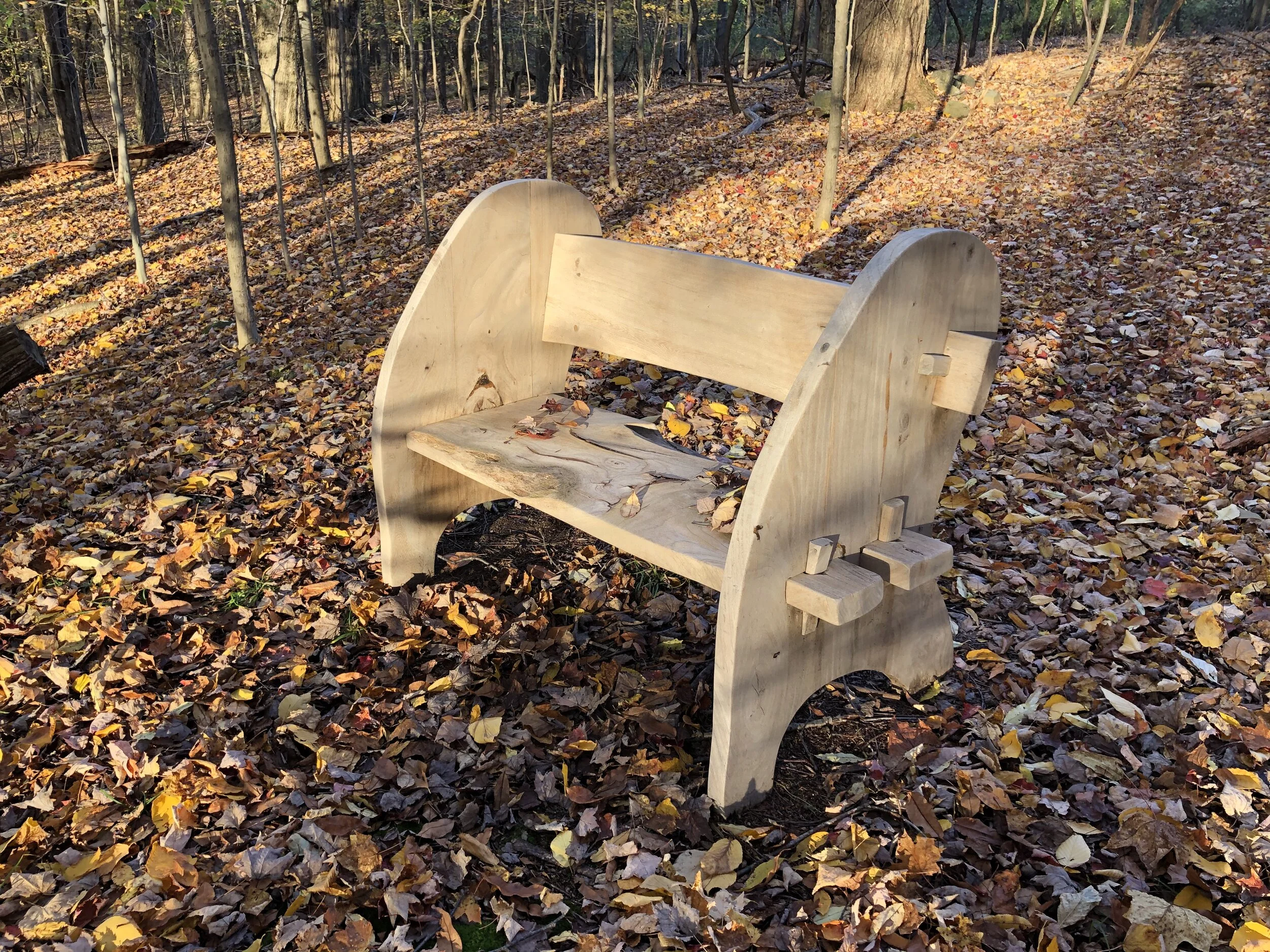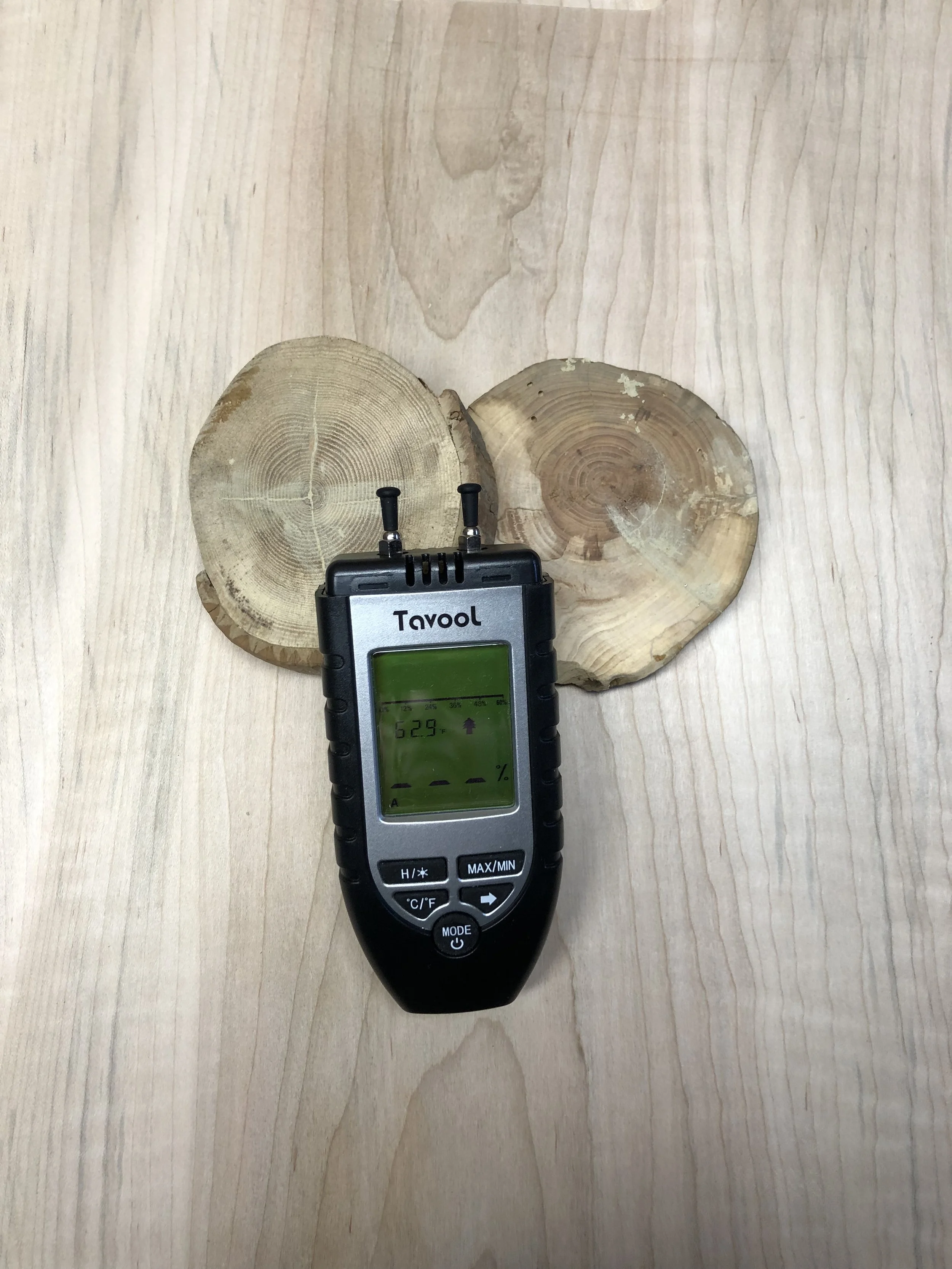Many people approach us with a story similar to this one; “We just had a giant Oak tree fall down in our yard. Our children played under it for years. We would like you to make a table from it as a remembrance.” Easier said than done! Most people only have some vague idea of what it takes to convert a fallen tree to lumber. The logistics of cutting, moving, assessing for rot in a downed tree is a story for another blog. What is critically important is that wood has to be dry before it can be used. After a tree comes down it can either dry “as is” or be cut into boards. It must be dried either by air drying or kiln drying. People ask, “Well how long will that take?” There is no easy answer to that as it depends on the species of wood, the humidity in the environment, and the thickness of the wood. We use a moisture meter to tell us when our wood is ready to be used. Wood dry enough for use is generally considered to be ready for use in the “low” (under 12%) range. If wood is not properly dry it can split, warp, or “move” (shrink or expand). So next time you want to save that old Oak tree, consider the costs involved in moving, cutting, milling, and drying it. Then wait until it’s nice and dry and give us a call!
Apple Cottage
Novelty, Ohio 44072
440-221-8290
Special Items for Special People and Special Occasions
Your Custom Text Here


